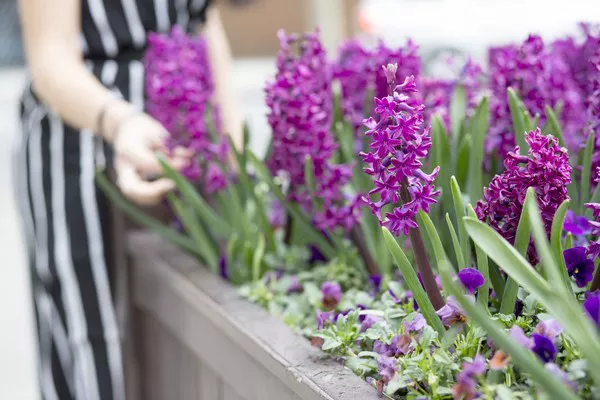Preserving the delicate allure of flowers is an art form that has gained popularity in recent years. Whether you want to immortalize a bouquet from a special occasion or capture the ephemeral beauty of your garden blooms, encasing flowers in clear resin provides a stunning and enduring solution. In this guide, we will delve into the step-by-step process of preserving flowers in clear resin, offering insights and tips to ensure a successful and aesthetically pleasing outcome.
Choosing the Right Flowers
Before embarking on the preservation journey, it’s crucial to carefully select the flowers you wish to encapsulate in resin. Opt for blossoms at their peak, avoiding those that are overly mature or showing signs of wilting. The type of flowers chosen will greatly influence the final result, so consider the color, size, and petal structure to achieve the desired aesthetic in your resin creation.
Preparing the Flowers
Proper preparation is key to a successful preservation process. Begin by removing excess foliage, ensuring that only the essential elements of the flower, such as the petals, stem, and any distinctive features like leaves or buds, are retained. Gentle handling is vital to prevent damage to the delicate blooms. It’s advisable to conduct this process with the utmost care, emphasizing the intricate details that make each flower unique.
Drying Flowers for Resin Preservation
Once the flowers are meticulously prepared, the next crucial step is drying. The drying process removes moisture from the flowers, preventing them from decomposing within the resin. There are several methods for drying flowers, with air-drying and desiccant methods being the most common. Flowers can be hung upside down in a cool, dark place for air-drying, or placed in a container with a desiccant, such as silica gel, for a more expedited drying process. Ensure that the flowers are completely dry before moving on to the resin encapsulation stage.
See Also: How do I get my jade plant to flower?
Choosing the Right Resin
Selecting the appropriate resin is pivotal to achieving a flawless preservation of flowers. Opt for a high-quality, crystal-clear epoxy resin that is specifically designed for casting purposes. The resin should have a low viscosity to ensure it easily penetrates the intricate details of the flowers, capturing their beauty with precision. Additionally, choose a resin with a long curing time to allow for meticulous positioning of the flowers and the elimination of any air bubbles.
Preparing the Resin Mixture
Preparing the resin mixture requires attention to detail. Measure the resin and hardener in the correct ratio as per the manufacturer’s instructions. Thoroughly mix the components in a disposable container, taking care to stir slowly to minimize the introduction of air bubbles. The choice of resin additives, such as UV stabilizers or color pigments, can be considered at this stage to enhance the overall appearance of the preserved flowers.
Positioning and Arranging Flowers
With the resin mixture prepared, it’s time to arrange the dried flowers within the chosen mold. This step allows for creativity and personalization, as you can experiment with different layouts and orientations. Consider layering multiple flowers or arranging them in a cascading pattern to create a visually appealing composition. It’s essential to work efficiently during this phase, as the resin has a limited working time before it begins to cure.
Encapsulating Flowers in Resin
The encapsulation process is the heart of preserving flowers in resin. Carefully pour the resin mixture over the arranged flowers, ensuring even coverage and penetration into every nook and cranny. Use a heat gun or torch to eliminate any surface bubbles that may have formed during the pouring process. Take your time to achieve a seamless, bubble-free finish, emphasizing the exquisite details of each flower.
Curing and Demolding
After the resin has been poured and any surface bubbles removed, allow the piece to cure in a dust-free and well-ventilated area. Follow the manufacturer’s recommended curing time, which typically ranges from 24 to 72 hours. Once cured, carefully demold the resin creation, taking care not to damage the delicate flowers. The result should be a stunning, transparent masterpiece that beautifully preserves the chosen blooms.
Finishing Touches and Display
To enhance the aesthetic appeal of your preserved flowers, consider adding finishing touches. Sanding the edges for a smooth finish and polishing the surface can elevate the overall appearance. Additionally, explore creative options such as embedding additional elements like leaves, glitter, or small decorative items to personalize your resin creation further.
Conclusion
Preserving flowers in clear resin is a captivating way to immortalize the fleeting beauty of nature. From careful flower selection to meticulous resin preparation and encapsulation, each step plays a crucial role in achieving a visually stunning and enduring masterpiece. Experiment with different flowers, molds, and resin additives to create unique pieces that capture the essence of the blooms for years to come. With patience and attention to detail, you can transform ordinary flowers into extraordinary works of art, preserving their natural beauty in a timeless and elegant form.


